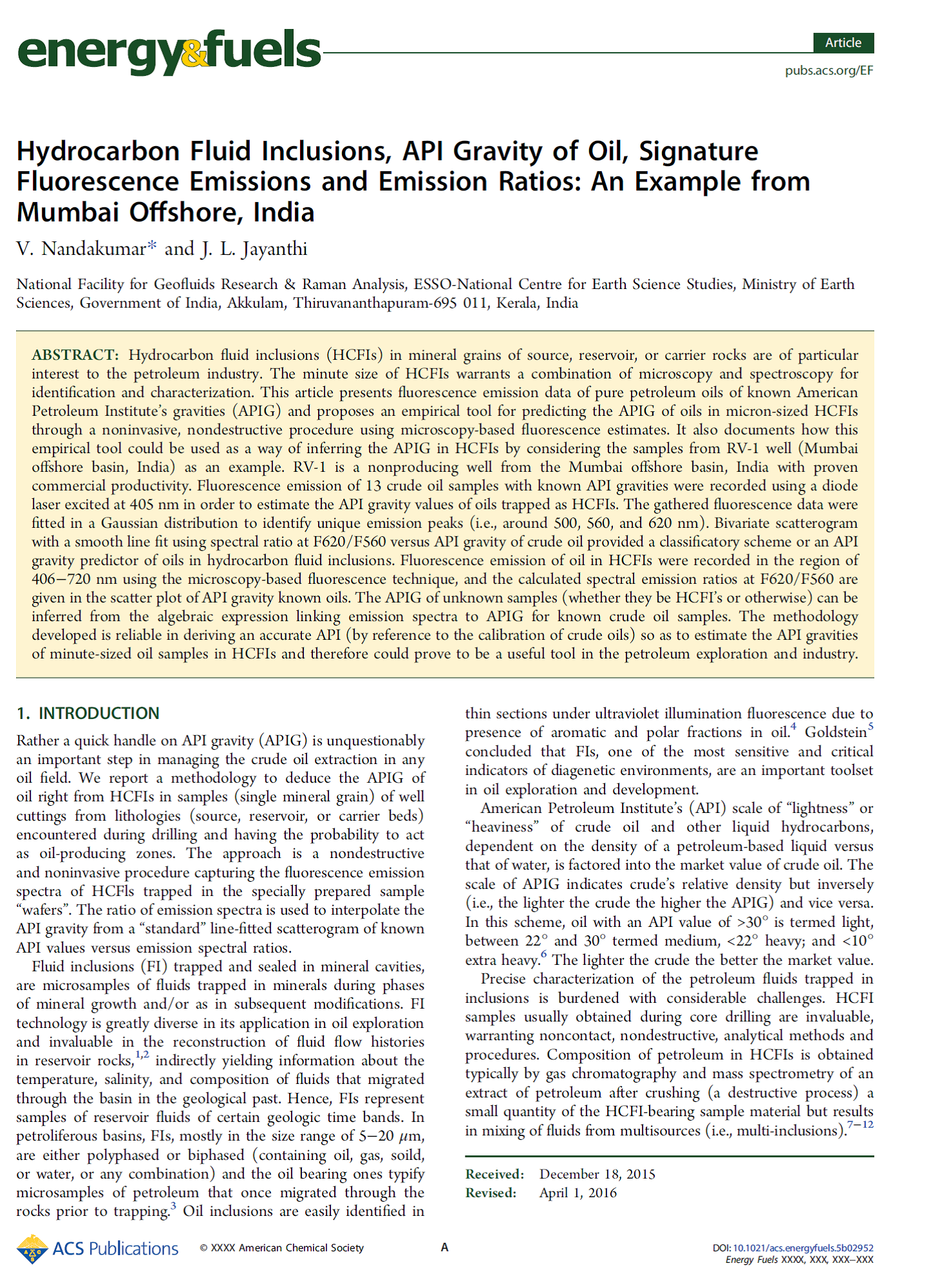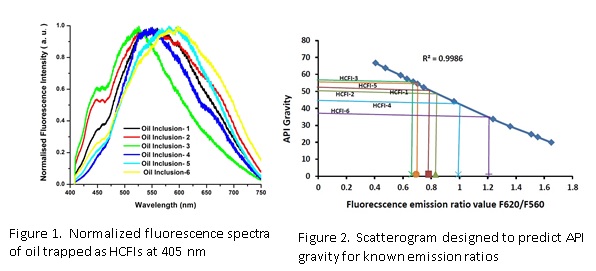 Fluid inclusions (FIs) are microsamples of fluids trapped in minerals during mineral growth and/or as in subsequent modifications. FI technology is greatly diverse in its application in oil exploration and invaluable in the reconstruction of fluid flow histories in reservoir rocks, indirectly yielding information about the temperature, salinity, and composition of fluids that migrated through the basin in the geological past. Hence, FIs represent samples of reservoir fluids of certain geologic time bands. In petroliferous basins, FIs, mostly in the size range of 5−20 μm, are either polyphased or biphased (containing oil, gas, soild, or water, or any combination) and the oil-bearing ones typify microsamples of petroleum that once migrated through the rocks prior to trapping. Hydrocarbon fluid inclusions (HCFIs)/oil inclusions in mineral grains of source, reservoir, or carrier rocks are of particular interest to the petroleum industry. Determination of the American Petroleum Institute’s gravity (APIG, density of oil factored into the market value of crude oil) of oils in HCFIs is important since it offers unique insight into the quality of oils that are present in the different formations of petroliferous basins. We have identified that the scattergram of emission ratio (F620/F560) of crude oils versus API gravity is an accurate graphical tool to predict or determine the API gravity of oils in HCFIs. The APIG of unknown samples (whether they be HCFIs or bulk oils) that can be inferred from the derived algebraic expression linking emission spectra to APIG for known crude oil samples i.e., y = y0 (x0 − x)t ± 1 where y0, x0, and t are constants with values, y0 = 23, x0 = 2.55, and t = 1.4, and x is the emission ratio value at F620/F560. The study highlights the measuring of the fluorescence emission of the HCFIs as a valuable signature for quick detection of APIG.
Fluid inclusions (FIs) are microsamples of fluids trapped in minerals during mineral growth and/or as in subsequent modifications. FI technology is greatly diverse in its application in oil exploration and invaluable in the reconstruction of fluid flow histories in reservoir rocks, indirectly yielding information about the temperature, salinity, and composition of fluids that migrated through the basin in the geological past. Hence, FIs represent samples of reservoir fluids of certain geologic time bands. In petroliferous basins, FIs, mostly in the size range of 5−20 μm, are either polyphased or biphased (containing oil, gas, soild, or water, or any combination) and the oil-bearing ones typify microsamples of petroleum that once migrated through the rocks prior to trapping. Hydrocarbon fluid inclusions (HCFIs)/oil inclusions in mineral grains of source, reservoir, or carrier rocks are of particular interest to the petroleum industry. Determination of the American Petroleum Institute’s gravity (APIG, density of oil factored into the market value of crude oil) of oils in HCFIs is important since it offers unique insight into the quality of oils that are present in the different formations of petroliferous basins. We have identified that the scattergram of emission ratio (F620/F560) of crude oils versus API gravity is an accurate graphical tool to predict or determine the API gravity of oils in HCFIs. The APIG of unknown samples (whether they be HCFIs or bulk oils) that can be inferred from the derived algebraic expression linking emission spectra to APIG for known crude oil samples i.e., y = y0 (x0 − x)t ± 1 where y0, x0, and t are constants with values, y0 = 23, x0 = 2.55, and t = 1.4, and x is the emission ratio value at F620/F560. The study highlights the measuring of the fluorescence emission of the HCFIs as a valuable signature for quick detection of APIG.





 RTI Act
RTI Act
